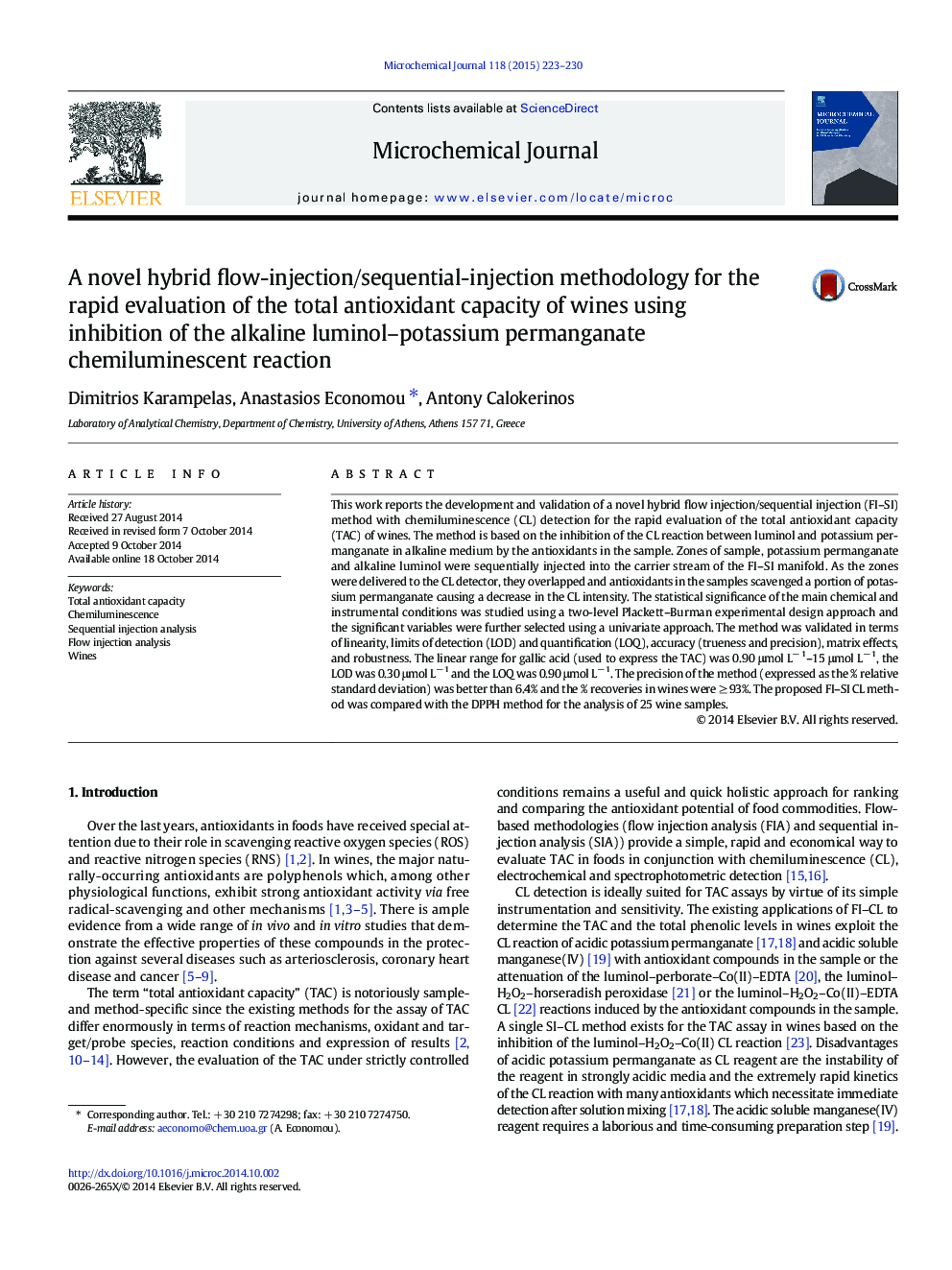| Article ID | Journal | Published Year | Pages | File Type |
|---|---|---|---|---|
| 7642897 | Microchemical Journal | 2015 | 8 Pages |
Abstract
This work reports the development and validation of a novel hybrid flow injection/sequential injection (FI-SI) method with chemiluminescence (CL) detection for the rapid evaluation of the total antioxidant capacity (TAC) of wines. The method is based on the inhibition of the CL reaction between luminol and potassium permanganate in alkaline medium by the antioxidants in the sample. Zones of sample, potassium permanganate and alkaline luminol were sequentially injected into the carrier stream of the FI-SI manifold. As the zones were delivered to the CL detector, they overlapped and antioxidants in the samples scavenged a portion of potassium permanganate causing a decrease in the CL intensity. The statistical significance of the main chemical and instrumental conditions was studied using a two-level Plackett-Burman experimental design approach and the significant variables were further selected using a univariate approach. The method was validated in terms of linearity, limits of detection (LOD) and quantification (LOQ), accuracy (trueness and precision), matrix effects, and robustness. The linear range for gallic acid (used to express the TAC) was 0.90 μmol Lâ 1-15 μmol Lâ 1, the LOD was 0.30 μmol Lâ 1 and the LOQ was 0.90 μmol Lâ 1. The precision of the method (expressed as the % relative standard deviation) was better than 6.4% and the % recoveries in wines were â¥Â 93%. The proposed FI-SI CL method was compared with the DPPH method for the analysis of 25 wine samples.
Keywords
Related Topics
Physical Sciences and Engineering
Chemistry
Analytical Chemistry
Authors
Dimitrios Karampelas, Anastasios Economou, Antony Calokerinos,
